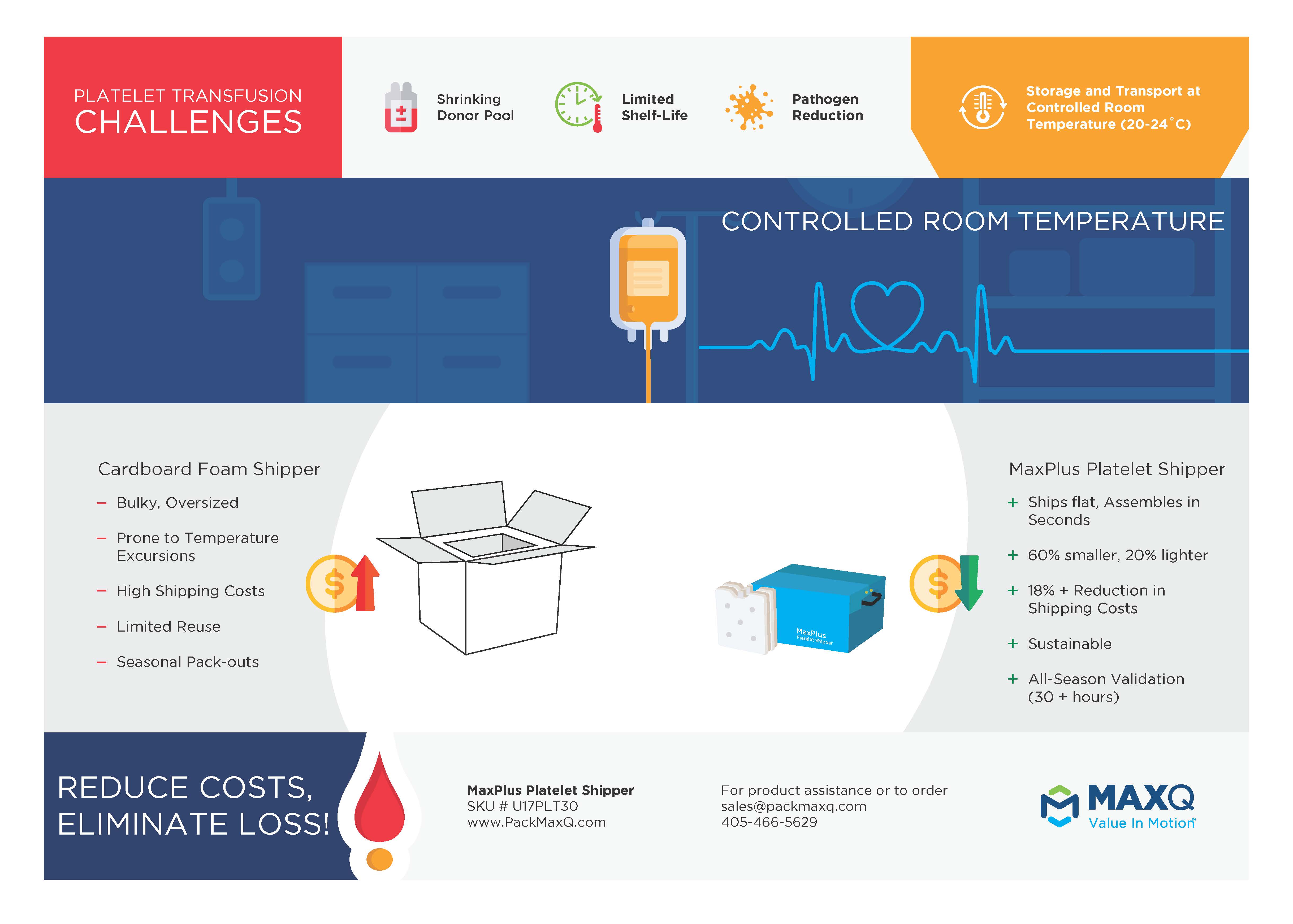Reduce Costs and Eliminate Loss of Platelets with MaxPlus Platelet Shipper
At each step in the blood supply chain, precise temperatures must be maintained to ensure the integrity and viability of the blood or blood products. Too cold or too warm, and the blood products may become spoiled and unusable. This becomes all the more challenging when storing and transporting platelets (apheresis) which must be maintained between 20-24°C. With the shrinking donor pool, limited shelf-life and pathogen reduction costs; it is a challenging yet a manageable task to avoid undesired loss of platelet units during transport.

The current industry standard foam (PUR) and cardboard shippers are prone to temperature excursions; require multiple SOPs for seasonal pack-outs, occupy a large amount of storage space and provide limited reuse. As an oversized system they result in high shipping costs.

The MaxPlus Platelet Shipper is a sustainable, cost-reducing solution that is shipped flat and can be assembled in seconds, is qualified for up to 30 hours across all seasons and is guaranteed to generate at least 18% reduction in shipping costs.
The MaxPlus Platelet Shipper is a sustainable, cost-reducing solution that is shipped flat and can be assembled in seconds, is qualified for up to 30 hours across all seasons and is guaranteed to generate at least 18% reduction in shipping costs.
To find out more about how your blood bank can benefit from MAXQ’s advanced packaging, visit MaxPlus Blood Center Solutions.




